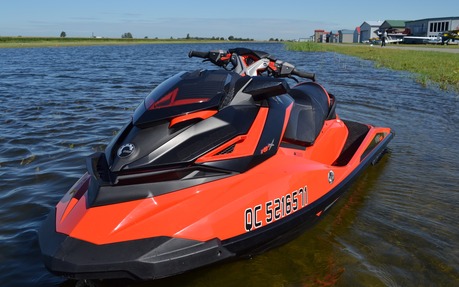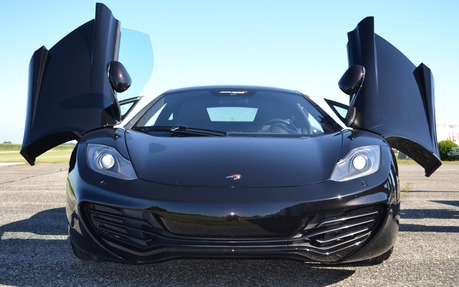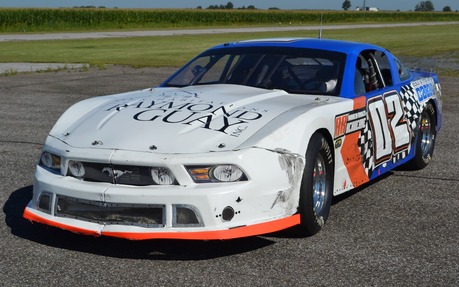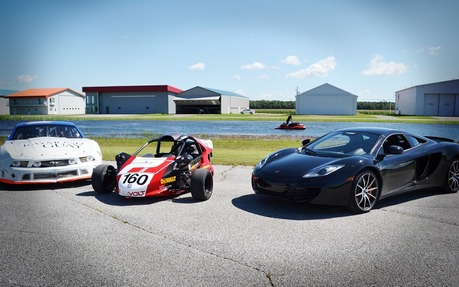Sea-Doo RXP-X vs T-Rex 16S vs McLaren MP4-12C vs NASCAR
During an impromptu discussion at the last Montreal Boat Show, the folks at BRP mentioned to us that their all-new 300-horsepower, Sea-Doo RXP-X watercraft was faster off the line than many sports cars. What could be more interesting than a good discussion between performance enthusiasts? “Challenge accepted,” we said at The Car Guide, as we seeked to validate this claim by setting up a little acceleration showdown.
We headed to the Saint-Hyacinthe airport, south of Montreal. It was the perfect location for this type of race, since the landing strip is flanked by an immense water basin in which hydroplanes can land. Add a warm sun, passionate teams of people and four choice vehicles, and we were in for a hotly contested matchup!

300 horsepower, the Sea-Doo RXP-X
The Sea-Doo RXP-X is without a doubt the most powerful personal watercraft ever produced. It’s equipped with a supercharged Rotax 1630 ACE engine that develops no less than 300 horsepower. That muscle is sent to the water through a direct-drive turbine. We were expecting explosive blastoffs, but we knew that on a quarter-mile acceleration run against its rivals, it would be difficult for the RXP-X to keep up, as its top speed is limited to 72 mph (118 km/h) in accordance to an agreement between manufacturers and the Canadian coast guard.
The RXP-X 300 amazed us with its incredible power, while its top speed is achieved in a matter of seconds. It bites into the water and offers performance that’s tough to beat, even for a high-performance watercraft.

McLaren MP4-12C
To heat things up, Pfaff Auto set us up with a McLaren MP4-12C, a supercar blessed with a twin-turbo V8 engine that belts out 616 horsepower. The car was fast off the line as we expected, but pulled away from the pack halfway through the race thanks to its meaty torque curve. The McLaren always displayed a surprising amount of forward motion, no matter what speed we were already driving at. In the last few years, the English automaker literally made its mark in the supercar segment.

Why not a T-Rex?
To spice things up, the friendly folks from Campagna Motors accepted our invitation, and showed up for the race with a T-Rex 16S, slightly modified by the manufacturer, but still equipped with its original powertrain, a 160-hp BMW engine. We knew the T-Rex has always offered a sense of freedom and a unique driving experience, but we also discovered that it was equally capable of exhilarating performance. It held its own in this high-powered group of vehicles, some costing much, much more.

A NASCAR racer? The icing on the cake
Finally, why not add a race car to the matchup? The people at the Andrew Ranger driving academy accepted our challenge, bringing along a race beast that hides a 450-hp, 5.7-litre V8 under its hood. We knew NASCAR race cars aren’t necessarily built for acceleration runs, and it was surprising to see how well it managed at the start of the race. It’s also the vehicle that had the best engine sound.
Some might wonder why we didn’t add a Tesla Model S P90D to the fight. We did ask Tesla in California to provide us with one, but they refused our invitation.
Don’t miss all the action of this high-performance showdown, soon to be featured on Propulsion, which airs on the French television network TVA.
